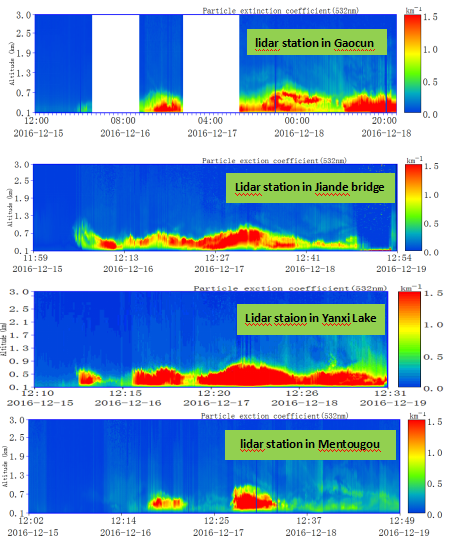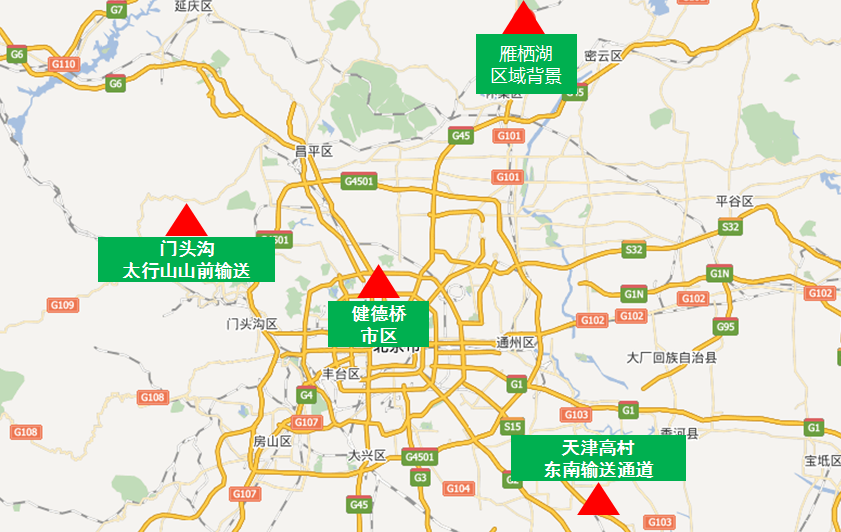
China's Beijing-Tianjin-Hebei (Jing-Jin-Ji) Area has suffered from severe haze pollution in recent years. To address this national issue, researchers from the Anhui Institute of Optics and Fine Mechanics (AIOFM), Hefei Institutes of Physical Science of the Chinese Academy of Sciences established a lidar network to provide spatial distribution of aerosols in this haze pollution episode.
Since its establishment in the Jing-Jin-Ji Area of China in 2013, the lidar network has made remarkable contributions to air quality ensuring and effects reduction evaluation. Through the image of the distribution of haze thickness presented in the CCTV's weather forecast, the lidar network offers the real-time and direct view of haze thickness distribution.
For now, there are still four lidar monitoring stations serving Beijing and Tianjin areas, for example, the Mentougou Lidar Station is operating to monitor the pollutant transportation pathway along the piedmont of the Taihang Mountains, the Gaocun Lidar Station in Tianjin to monitor the southeast pathway, the Jiande Bridge Lidar Station is monitoring the time-space distribution of fine particles in the center of Beijing.
In additon to the three lidar stations mentioned above, the Yanqi Lake Lidar Station was simultaneously set up in the northernmost area of Beijing to monitor the background concentration. This northernmost lidar network recorded the occurrence, development and dissipation of this heaviest haze episode in Beijing's winter since 2013.
For example, last winter, particles first appeared at the western lidar station in Mentougou at 21:49 on Dec.15, which was located at the piedmont pathway of Taihang Mountains. Then, the pollution layer sank rapidly at the lidar station in Gaocun at the southeast pathway at 22:33. Subsequently at 23:28, the particle extinction coefficient at the Beijing Jiande bridge station rose to 1-1.5 km. Finally, at 19:40 the next day, the heavy haze cast its impact on the northernmost lidar station at Yanqi Lake.
In cooperation with the Meteorological Observation Center of China Meteorological Administration, th eresearchers will continue to use the lidar network to air pollution monitoring in mega-cities, and the monitoring result in terms of images will serve as an important indicator of air quality in the CCTV weather forecast.

Figure1. Four lidar observing stations. (Image by LV Lihui)

Haze thickness observed by Jiande Bridge lidar stations from 16 December to 20 December. (Image by LV Lihui)

Lidar network established by AIOFM. (Image by LV Lihui)

86-10-68597521 (day)
86-10-68597289 (night)

86-10-68511095 (day)
86-10-68512458 (night)

cas_en@cas.cn

52 Sanlihe Rd., Xicheng District,
Beijing, China (100864)

